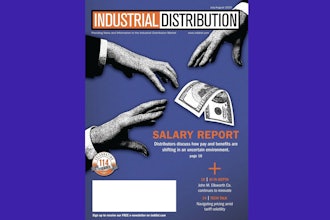Sigmund Freud said, “Humanity is in the highest degree irrational, so that there is no prospect of influencing it by reasonable arguments.”
Although Freud was describing how humans respond to therapy, he could also be describing buyers and sellers. Buyers can be irrational, so you can’t just use rational methods and techniques to persuade them. Buyers will choose alternatives using both rational and irrational criteria. This mental tug-of-war can be a challenge for salespeople.
Have you ever done everything right on the sales call, but the customer still didn’t buy? If your answer is "Yes," you’re not alone. You proposed a solution that perfectly matched the buyer’s needs and they still didn’t buy. It’s frustrating. You might even ask yourself, “How could any rational person say no?” But remember, people aren’t rational.
To change someone’s mind you must first understand their mind. There are several biases that impact our decisions. These biases cause buyers to think your price is too high. These biases cause buyers to focus on immediate gains and ignore greater long-term gains. These biases compel buyers to stick with the status quo and ignore new ideas.
If salespeople don’t understand these biases, they will struggle to overcome these biases.
In the fourth edition of Value-Added Selling, we at Tom Reilly Training have explored the dynamics of decision-making. Here is an overview of the biases that impact decision making, and more importantly, how to manage these biases throughout the decision-making process.
Immediacy Bias
Humans are hard-wired for immediate gains. Our desire for instant gratification served us well in the caveman days. If hungry, find food. If thirsty, find water. If tired, sleep. However, in today’s world, the ability to delay gratification is often considered a leading contributor to overall success.
Humans opt for an immediate, short-term gain over a long-term gain. That is one reason buyers focus on the price difference between you and the competition. The difference between your price and the competitor’s price is a short-term gain. The price difference is tangible and real. Your long-term value-added, although more impactful, is less tangible.
To get the buyer past this bias they need to think long term. Ask the buyer questions that causes them to think long term. A long-term question forces the buyer to think about long-term outcomes and long-term consequences. If a buyer thinks long term, price becomes less of an issue.
Loss-Aversion Bias
Losses loom larger than gains. That means we would rather not lose than win. When buyers are making decisions, they focus more on what they are losing versus what they are gaining. When buyers are acquiring your solution, they are more likely to focus on what they are giving up (their money) versus what they will gain from your solution.
When buyers focus on the money they are giving up, turn their attention to the value they are also giving up. When presenting your value-added solution, it’s critical that the buyer understands what they give up by not choosing your solution. In the new edition of Value-Added Selling, we call this the pain proposition. Emphasize that the greater cost is not the price paid, it’s the cost of doing nothing and getting nothing.
In Daniel Kahneman’s Thinking Fast and Slow, he mentions that people need to gain 1.5 to 2.5 times more than what they stand to lose. For example, if your solution is $1,000 more than the competition, the buyer will need to gain at least $1,500 to $2,500 in value. In your presentations, detail how your solution will provide 1.5 to 2.5 times what they are giving up.
Status-Quo Bias
Buyers like to stick with what they know. Buyers prefer familiar suppliers and familiar solutions. When buyers are presented with multiple options, that seem similar, they usually stay with the incumbent supplies.
The status-quo bias also impacts buyers considering a new technology, a new process, or a new way of approaching or solving a problem. When selling a new idea, present the familiarity of the new idea. In the new Value-Added Selling, this is called finding a customer parallel: identify the underlying concept you are selling, demonstrate how the buyer is already using the concept and then show the linkage with your solution. This shows the buyer how something new is fundamentally something familiar.
For example, let’s say you are selling the buyer on kitting services. Your company would gather several parts and pieces and kit them together to help the installer complete installation more efficiently. The underlying concept you are selling is not kitting, it’s efficiency. As the salesperson, you would then find other ways this customer has bought into efficiency. Maybe they adopted a new CRM system to more efficiently manage customer relationships. Maybe they invest in high-efficiency equipment to run their business more efficiently. Whatever the example, show how your kitting solution is essentially the same. The buyer will then view this new idea as the same. Your once foreign concept is now a familiar concept.
Buyers are not always rational decision makers. If they were, they would choose to maximize all of their decisions based on the long-term gain. But they don’t. Don’t get too frustrated by it, learn from it. The only way to overcome these biases is to first understand them. Identify the biases impacting your customer’s decisions. These decision-making biases represent a challenge for some salespeople and an opportunity for other salespeople. Embrace these techniques and learn how to more effectively persuade the buyer to choose your value-added solution.
Paul Reilly is president of Reilly Sales Training and Tom Reilly Training, and co-author of Value-Added Selling, fourth edition (McGraw-Hill 2018).






















